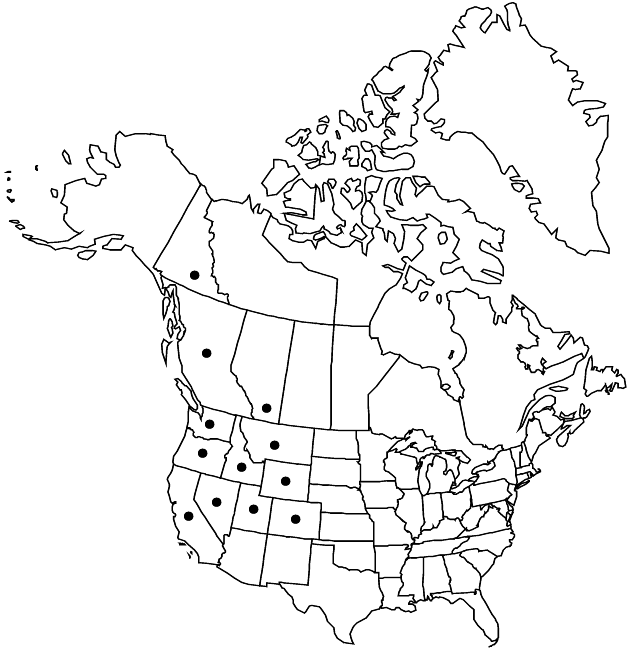Artemisia michauxiana
in W. J. Hooker, Fl. Bor.-Amer. 1: 324. 1833.
Perennials, 30–100 cm, strongly aromatic (lemon-scented; rhizomatous). Stems relatively many, erect, green, simple, glabrous. Leaves cauline, green; blades broadly lanceolate to narrowly elliptic, 1.5–11 × 1–1.5 cm, 2-pinnately lobed, (ultimate lobes toothed), faces white-tomentose (abaxial) or glabrous (adaxial), yellow-gland-dotted. Heads (erect to nodding, peduncles 0 or to 10 mm) in paniculiform to spiciform arrays 8–15 × 1–1.5 cm. Involucres campanulate, 3(–4) × 2–5.5 mm. Phyllaries (yellow-green, rarely purplish) broadly ovate, glabrous or sparsely hairy, yellow-gland-dotted. Florets: pistillate 9–12; bisexual 15–35; corollas yellow, 1–1.5 mm, glandular. Cypselae (yellow to light brown) ellipsoid, ca. 0.5 mm, glabrous or glandular. 2n = 18, 36.
Phenology: Flowering mid summer–early fall.
Habitat: Talus slopes, alpine and subalpine drainages
Elevation: 1900–3700 m
Distribution

Alta., B.C., Yukon, Calif., Colo., Idaho, Mont., Nev., Oreg., Utah, Wash., Wyo.
Discussion
Members of the Artemisia ludoviciana complex with deeply lobed leaves are sometimes confused with A. michauxiana, and there is evidence that plants hybridize in some locations. Artemisia michauxiana is distinguished by its glabrous, bright green to yellow-green foliage and lemony-sweet fragrance.
Selected References
None.